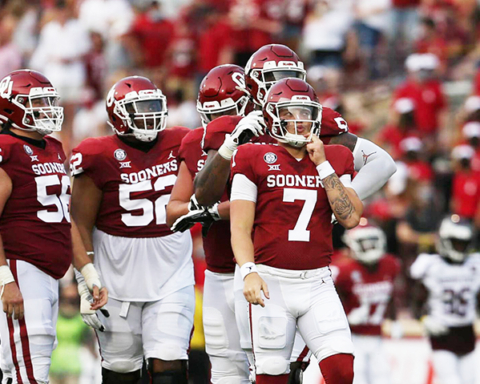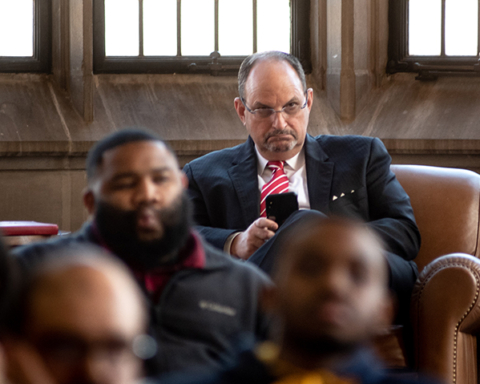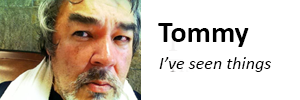 We’re always hearing about the new normal.
We’re always hearing about the new normal.
We’re also all wondering how the college football season in general, and the University of Oklahoma in particular, will emerge on the other side of the Covid-19 pandemic. What’s their new normal?
Questions are abundant.
How will the sport evolve with canceled spring practices and delayed preseason drills? How about eligibility issues for players who are leveraging their college experience for NFL paydays?
How about the health concerns of late teens and 20-somethings colliding with blood, sweat and tears flying everywhere?
And the elephant in the room: What about the loss of athletic revenue?
Let’s address the main driver: Loss of revenue. One pandemic scenario is that it starts to subside, the curve flattens and nosedives dramatically, giving off appearances of flattening. Not all the way eliminated, but coming in for a soft landing. Businesses and the general public start to envision a return to all things normal.
OU, not wanting to lose additional revenue that pays for renovations and all other expenses related to its flagship athletic department, decides to salvage the 2020-2021 season. Should attendance be phased in with fewer fans in the stands?
And if so, will the athletic department be able to absorb massive losses from fewer fans and TV revenue that’s bound to be hurting as well? What about donations? Will the collapsing oil industry in West Texas impact OU donors?
And you hate to keep piling on. But here’s something that could happen at OU, or at any number of the scores of college football campuses: Reigniting the spread of the virus. It only takes one case of this to create catastrophic results.
As an example, consider the Champions League soccer match in Milan, Italy, between Spanish club Valencia and Italian club Atalanta of Bergamm on Feb. 19.
The matchup drew 40,000 fans and is regarded as “Game Zero,” the gathering that showed the dangers of large crowds with a pandemic lurking.
Within a couple of days of the match, spot cases of COVID-19 were reported. A month later, nearly 7,000 people in Bergamo had tested positive and nearly 1,000 died. At the same time, Valencia had more than 2,600 people infected.
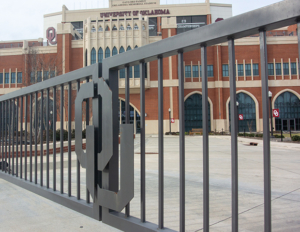
Momentum had been established. And we all know how Italy has suffered in this pandemic.
Do we want that possibility in college football where tens of thousands will pull down their uncomfortable face masks and scream for their teams? It’s a safe bet that OU fans are as passionate as Italian soccer fans.
Another factor: Oklahoma is a red state. The U.S. president is an admitted cheerleader who wants a return, even a rush, to prosperity. In mid-April, he tried to provide hope to one his political strongholds by saying he wants to see 100,000 people at Alabama football games.
“Our normal is if you have 100,000 people in an Alabama football game, or 110,000 to be exact, we want 110,000 people there,” President Trump said in the news briefing. “We want every seat occupied. Normal is not going to be a game where you have 50,000 people.”
Expect to see a different kind of college football season in fall 2020, whether it actually goes on or is truncated or conference only….
But the reality is it’s going to take one Game Zero to set college football back even further. Granted, Game Zero didn’t have the benefit of social distancing and protective masks. In Italy, 9,600 out of 40,000 fans contracted COVID-19.
That’s a 25 percent exposure rate. Imagine if a game that attracted 100,000 fans, who have the benefit of the precautions, were exposed. It’s a guess, but I’m predicting 10 percent or 10,000 fans.
With a vaccine still in development, medical experts expecting a fall resurgence, and a national hospital system strained by the workload with the coronavirus AND fall’s impending common flu, it’s not a good time to bring tens of thousands of people together into a facility that rings a 100-yard football field.
It all doesn’t bode well for college football.
Expect to see a different kind of college football season in fall 2020, whether it actually goes on or is truncated or conference only. If the season is canceled, count on a lot of players using the opportunity to either declare for the NFL draft, enter the transfer portal or give up the game for the moment.
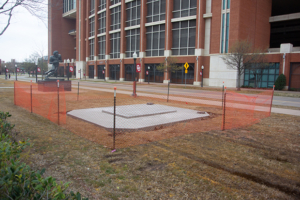
At Oklahoma, the projected lineup for 2020 could be dramatically different than 2021. That sophomore quarterback we were looking to lead the team might not play another down. Or he might play somewhere else because his parents want him closer to home for health concerns.
College football has survived significant events in the past, including world wars and the Spanish flu.
OU faced uncertainty about whether it would have a season in 1918 with the Spanish flu and WWI, but the season was eventually played. The Sooners fielded teams through WWII’s duration and started its modern-day tradition after the war when the G.I. Bill helped load its rosters with guys who’d dodged bullets in Europe and the Pacific.
If the 2020 season is scrapped, it will be significant. Expect a shift of power, perhaps more toward Power 5 schools that have the resources to survive an economic punch in the gut and give kids a better opportunity to play for pay.
So, as you break it down, it appears there might — or might not be — a new normal when it comes to college football.
Tommy Cummings is a former sports and news editor, reporter and columnist for various major newspapers including the Dallas Morning News, The San Francisco Chronicle and the Fort Worth Star-Telegram. More importantly, he once led the Hanna Dragons basketball team on a rampage of significant victories across eastern Oklahoma.

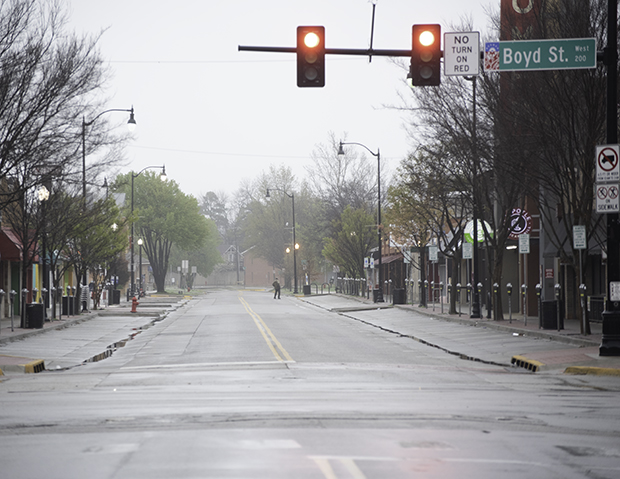
 Follow
Follow
